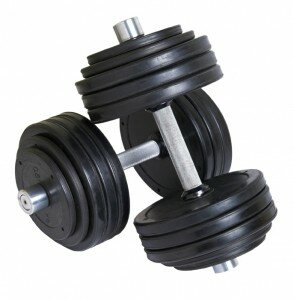In the final part of this 3-part series, we procvide you with 5 split-routine options to help you plan your workout week
1) Upper/Lower body split.
Simply divide your body in half and train your legs on Monday, your upper body on Wednesday and your legs again on Friday. The following week reverse your body parts so that over the 2 week period, every muscle group gets equal attention. This is a good method for those new to split routines. By way of progression, you can perform the upper/lower body split and train each half twice a week (Monday = lower body, Tuesday = upper body, Thursday = lower body, Friday = upper body). This increase in frequency can be beneficial for some trainees.
2) 3 Way Split.
This is a body part spilt where on Monday, you perform exercises for your chest and triceps, back and biceps get trained on Wednesdays and legs and shoulders are worked on Fridays. Rest over the weekend and start over on Monday by repeating the cycle.
3) 4 Way Split.
This routine breaks down the body into even smaller groups which means workouts can be shorter or you can get a lot of work done in the same time. On Monday perform exercises for your chest, on Tuesday train your back, rest on Wednesday, train your legs on Thursday and on Friday focus on shoulder and arms.
4) 4 way functional split.
This system ensures that all muscle groups are given equal attention in terms of volume and is ideal for anyone wanting to ensure their muscles remain “balanced”. Monday train hip dominant exercises such as dead lifts and back extensions, on Tuesday focus on vertical pushes and pulls i.e. shoulder presses and lat pull downs, Thursday concentrate on quad dominant leg exercises such as squats and leg extensions and Friday focus on horizontal pushes and pulls i.e. bench presses and seated rows.
5) Power lifting split.
Monday squats and assistance exercises, Wednesday bench press and assistance exercises, Friday dead lift and assistance exercises. This routine is especially good for those wishing to focus on strength either for power lifting or sports.
Once you have decided on which split routine you want to follow – one of the above or one of your own devising – you can start plugging in exercises into your programme. Again, there are lots of options to choose from but as a general rule of thumb, select 2-3 exercises per large muscle groups and 1-2 for smaller muscle groups and choose a variety of exercises to work your muscles different ways e.g. for chest you may start off with flat bench press, perform incline dumbbell flies next and finish up with dips. Rotate your exercises every 6-8 weeks to avoid getting into a training rut but don’t change things so often that your workouts aren’t consistent. Remember to change the training variables from time to time to keep your workouts fresh.
Planning your training week may take you some time but, once you have a plan and you stick to it you can record and measure your progress from one week to the next. Make sure you regularly increase the weights or do more reps to keep forcing your muscles to adapt and new levels of fitness and strength are all yours!
Popularity: 3% [?]




















